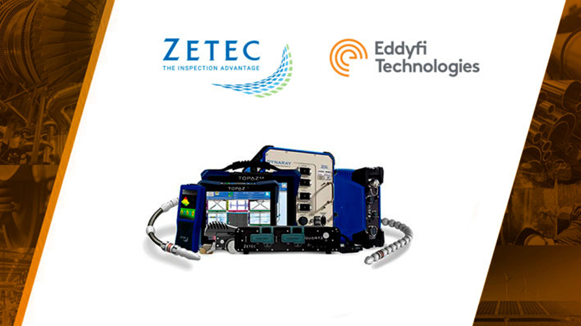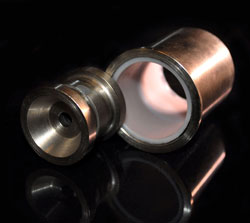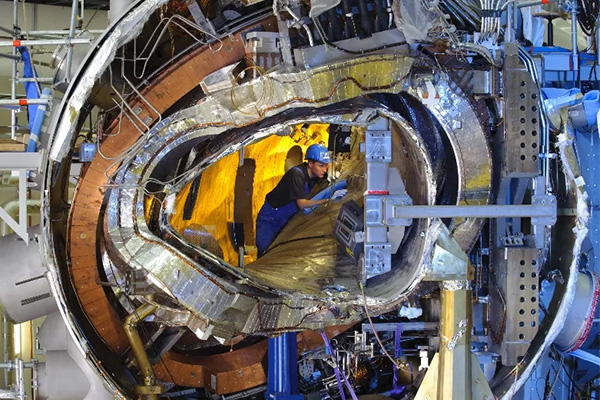
Focused on magnetic technology for the confinement of fusion energy, German venture-backed startups Gauss Fusion and Proxima Fusion are moving resolutely to become front-runners in the global race to pioneer commercial fusion power – seen by many as what could be one of the greatest breakthroughs of this century. New leadership, new partners and new funding are coming together at Gauss, but it is not a lone runner as Proxima builds on its close affiliation with the Max Planck Institute for Plasma Physics.
The fusion process requires temperatures of 150 to 300 million °C. Under these conditions, the particles can overcome their natural electromagnetic repulsion and fuse. In the process, they release energy that can drive turbines to generate electricity, just as in conventional power plants. Before the technology can be used commercially, further innovation and industrialization is required.
As new players around the globe race to accomplish the daunting challenge, Gauss is focusing on high-field magnetic confinement technology with its higher technology readiness level because the approach is technically more mature and has the clearest path to a fusion power plant in a shorter time. Others, notably, Tokamak Energy in the UK and Cambridge Fusion Systems in the U.S., are also embracing the strategy., as reported earlier in Magnetics Magazine; also Proxima.

Headquartered in Hanau, Germany, Gauss recently appointed its top leadership team as it gathers talent from key scientific and industrial organizations. Milena Roveda, previously an executive of Bayer, ThyssenKrupp and private equity firms, was named CEO. Frederick Bordry, chief technology officer, is a former director for accelerators and technology at CERN. Norbert Holtkamp, appointed principal scientist, played a pivotal role in the construction of several DoE facilities and served as principal deputy director general overseeing the construction of ITER, the world’s largest fusion research facility situated in Cadarache, France.

Fusion power plants are modelled after the sun. Like our central star, they convert hydrogen into helium, a process that releases enormous amounts of energy. Hence, fusion power plants are incredibly efficient in their fuel consumption and do not produce carbon dioxide. Fusion energy neither comes with the final storage problem of conventional long-lived fission waste, nor does it carry the risk of large-scale environmental contamination in the event of an accident. The technology is climate-neutral and base-load capable due to its constant availability. Together, the attributes make it a technology prize with potentially huge financial impact.
Gauss aims to bring the first gigawatt-class fusion power plant online in Europe using its high level of industry expertise and close collaboration with renowned European research institutes and experienced technology experts. Among these are CERN, the Max Planck Institute for Plasma Physics (IPP) and the Karlsruhe Institute of Technology. Gauss is a greentech venture founded in 2022 by companies from Germany, France, Italy, and Spain with extensive experience in fusion technology. In February, it completed a founders’ pre-seed financing round with €8 million in initial capital.
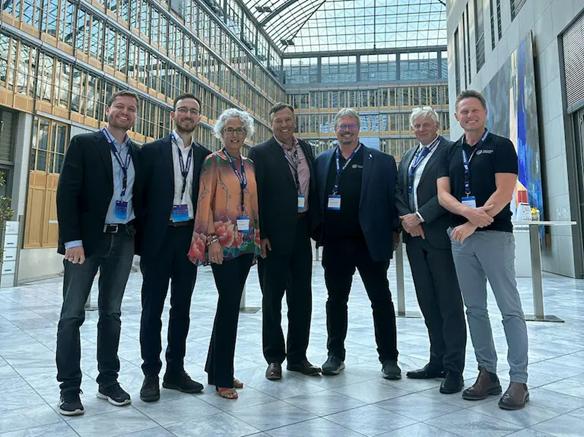
In another recent move, Gauss agreed with two other German fusion startups, Proxima and Focused Energy, to bundle their research and development activities in several areas in order to make faster progress. Even though Gauss and Proxima both pursue a magnet-based fusion approach and Focused Energy a laser-based fusion concept, the cooperation is envisioned to result in increased clout for further technological leaps on the way to the commercialization of fusion energy. Focused Energy is a German-American company spun out from TU Darmstadt in 2021 and now dually based in Darmstadt and Austin, Texas.
The partners not only aim to work together on technical issues, but also to address general challenges together. For example, they plan to collaborate on the development of a binding legal and regulatory framework, to support the education and training of specialists, and to work toward broad and informed acceptance of fusion energy among the public.
Proxima, based in Munich, is developing quasi-isodynamic (QI) stellarators where toroidal currents cancel out to zero, resulting in uniquely robust features. The German-funded W7-X facility, an invaluable prototype and testbed for the concept, is close by at the Max Planck Institute of Plasma Physics. Proxima is the first spin-out company from the institute and three quarters of the founding team are from it. Their immediate objective is to build a new stellarator power plant prototype in Munich in the early 2030s.
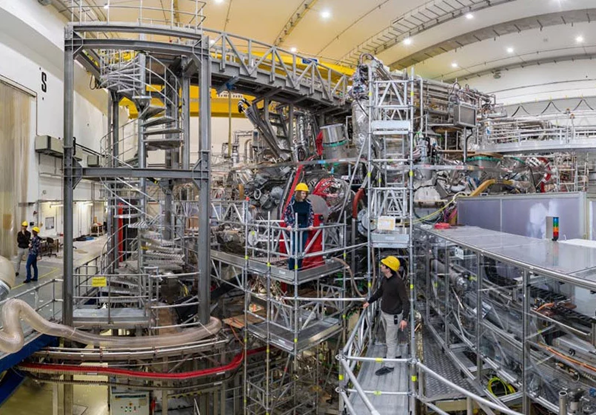
Wendelstein 7-X is the world’s largest fusion device of the stellarator type, designed to investigate its suitability for a power plant by testing an optimized magnetic field for confining the plasma. The technical core piece of the device is a system of 50 non-planar and superconducting magnet coils to produce the magnetic field. A key benefit of QI stellarators is the complete absence of plasma currents, and hence current-driven instabilities which can result in disruptions in other tokamak and stellarator concepts.
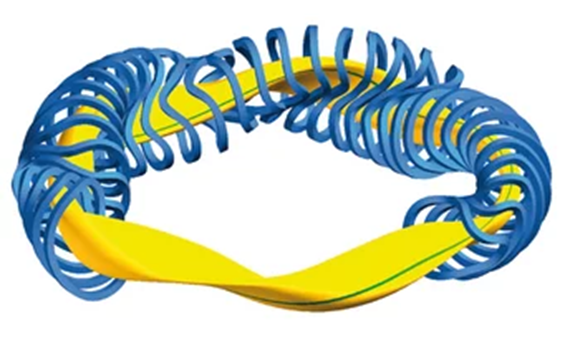
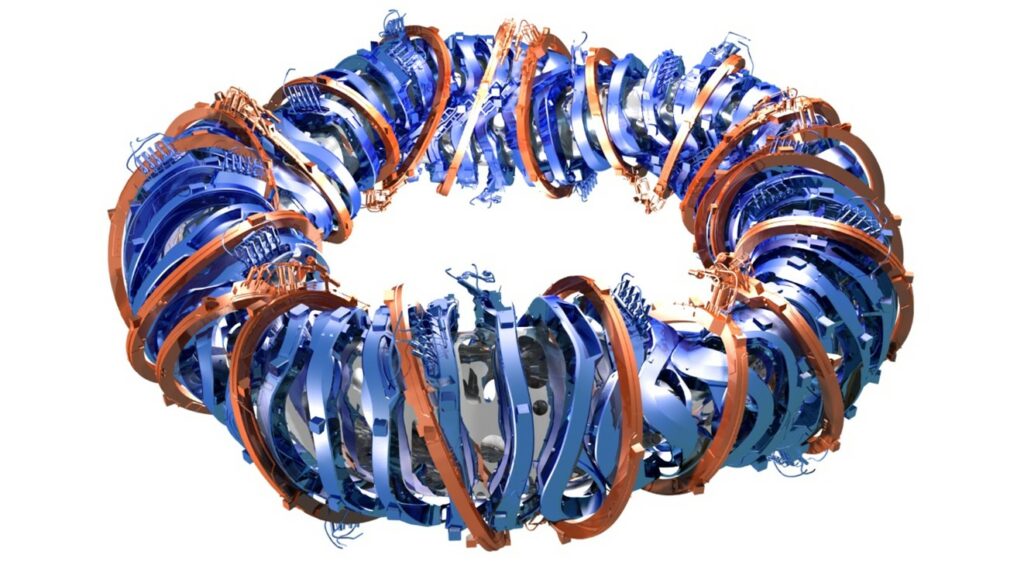
Because the fusion fire only ignites at temperatures above 100 million degrees, the fuel – a thin hydrogen plasma – must not come in contact with cold vessel walls, leading the IPP to pursue the path of magnetic fusion. Held by magnetic fields, the plasma floats almost contact-free inside the vacuum chamber.
It relies on superconducting materials which have zero electrical resistance and have been revolutionizing magnet technology for decades. Conventional superconductors require extremely low temperatures, near absolute zero. Modern high-temperature superconductors (HTS), however, can reach higher temperatures and magnetic field strengths while also having significantly wider design space, leading to less strict requirements. HTS technology is at the forefront of leading tokamak developments and is considered equally attractive for stellarators, which are less constrained by current-driven operational limits.
This makes the relevant technology readiness levels for magnetic confinement fusion power plants significantly higher than for other approaches such as laser fusion, maintains Proxima, with stellarators being one of the primary magnetic confinement concepts. Building on the results from W7-X, and enabled by recent advances in simulation and technology, fusion power plants based on QI stellarators are now within reach, the company believes.
For more info, see www.gauss-fusion.com, www.proximafusion.com, and www.ipp.mpg.de.

